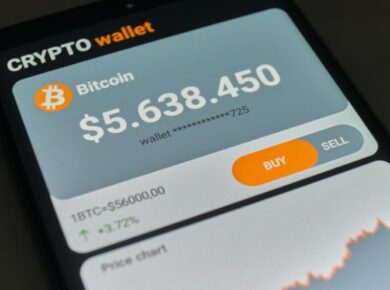Stablecoins have emerged as a crucial component of the digital economy, offering stability and reliability in the volatile world of cryptocurrencies. In this article, we delve into the role of stablecoins, regulatory considerations, and challenges. The influence of cryptocurrency is profound, and a trend mirrored in the pursuit of sustainable development.
Role of Stablecoins in Monetary Policy Transmission
One key aspect of stablecoins’ role in monetary policy transmission is their ability to enhance the efficiency and speed of transmission. Traditional channels of monetary policy, such as interest rate changes or open market operations, often face time lags and inefficiencies in reaching the broader economy. Stablecoins, on the other hand, operate on decentralized blockchain networks, allowing for near-instantaneous transactions and settlements. This increased efficiency can potentially expedite the transmission of monetary policy decisions, enabling a more timely and effective impact on the economy.
Another crucial aspect is the potential of stablecoins to mitigate cross-border transmission challenges. Traditional monetary policy tools primarily focus on domestic economies, making it challenging to influence global economic dynamics. However, stablecoins, being digital and borderless, can facilitate seamless cross-border transactions. This ability opens up new possibilities for central banks to extend the reach of their monetary policy actions beyond domestic borders. By leveraging stablecoins, central banks can potentially enhance their influence in the global financial system and promote more efficient cross-border monetary policy transmission.
The role of stablecoins in monetary policy transmission also has implications for central banks and financial institutions. Central banks may need to reassess their approach to monetary policy implementation, considering the growing influence of stablecoins in the digital economy. They may need to adapt their frameworks to incorporate stablecoin dynamics and ensure their policies remain effective and relevant in a changing financial landscape. Financial institutions, too, need to navigate the evolving stablecoin ecosystem, as these digital assets may impact their operations, liquidity management, and risk assessments.
However, it is important to recognize that the rise of stablecoins poses regulatory considerations and challenges. As stablecoins gain popularity, regulators are grappling with how to effectively oversee and regulate these digital assets. Concerns regarding investor protection, financial stability, money laundering, and systemic risk require careful attention. Striking the right balance between fostering innovation and ensuring stability is a key challenge that regulators face in the context of stablecoins’ role in monetary policy transmission.
Stablecoins, including TUSD, have the potential to revolutionize monetary policy transmission. Their unique characteristics of stability, efficiency, and global accessibility can enhance the effectiveness of monetary policy actions. However, policymakers and market participants must carefully navigate the regulatory landscape and address associated challenges.
Regulatory Considerations and Challenges
As stablecoins gain prominence in the financial landscape, regulators are confronted with significant considerations and challenges in overseeing these digital assets. The unique characteristics of stablecoins, such as their potential for widespread adoption and cross-border transactions, necessitate a comprehensive regulatory framework that balances innovation with stability.
The current regulatory landscape for stablecoins varies across jurisdictions. While some countries have taken proactive measures to address stablecoin regulation, others are still in the process of formulating appropriate guidelines. The absence of uniform regulations adds complexity and uncertainty to the stablecoin ecosystem, making it crucial for regulators to collaborate internationally and establish consistent regulatory standards.
One primary regulatory concern revolves around investor protection. Stablecoins are often used as a means of storing value and conducting transactions. Therefore, it is essential to ensure that investors are adequately protected from potential risks, such as operational failures, mismanagement of assets, or fraudulent activities. Regulators need to establish measures to safeguard investors’ interests and promote transparency and accountability in stablecoin operations.
Maintaining financial stability is another critical challenge in the context of stablecoins. The widespread adoption of stablecoins could potentially disrupt the existing financial system, including traditional banks and payment networks. Regulators must assess the potential systemic risks posed by stablecoins and design appropriate risk management frameworks. Collaboration between regulatory authorities and stablecoin issuers is crucial to identify and mitigate any threats to financial stability.
The issue of money laundering and illicit activities is also a concern in the realm of stablecoin regulation. The pseudonymous nature of certain stablecoin transactions raises challenges for anti-money laundering (AML) and know-your-customer (KYC) procedures. Regulators must establish robust AML and KYC frameworks to ensure compliance and prevent stablecoins from being misused for illicit purposes.
Conclusion
Stablecoins, particularly TUSD, have the potential to reshape monetary policy transmission by offering stability, efficiency, and global accessibility. However, regulatory considerations and challenges must be addressed to ensure investor protection, and financial stability, and mitigate illicit activities. Striking the right balance between regulation and innovation is crucial for unlocking the full potential of stablecoins in the evolving digital economy.
Read Next:
Forex Trading in Singapore: Legal Framework, Regulations, and Cryptocurrency Stance




